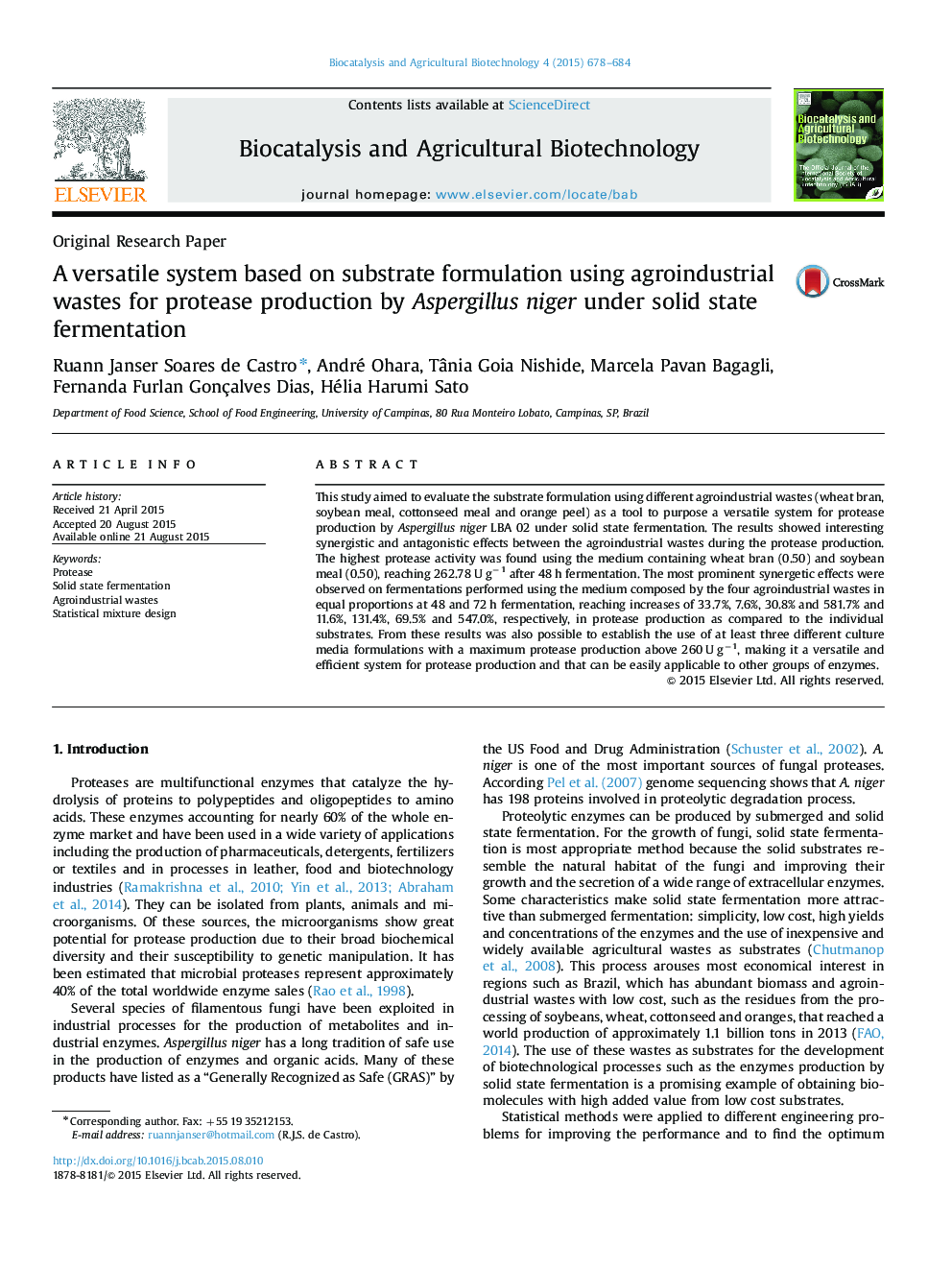| Article ID | Journal | Published Year | Pages | File Type |
|---|---|---|---|---|
| 2075324 | Biocatalysis and Agricultural Biotechnology | 2015 | 7 Pages |
This study aimed to evaluate the substrate formulation using different agroindustrial wastes (wheat bran, soybean meal, cottonseed meal and orange peel) as a tool to purpose a versatile system for protease production by Aspergillus niger LBA 02 under solid state fermentation. The results showed interesting synergistic and antagonistic effects between the agroindustrial wastes during the protease production. The highest protease activity was found using the medium containing wheat bran (0.50) and soybean meal (0.50), reaching 262.78 U g−1 after 48 h fermentation. The most prominent synergetic effects were observed on fermentations performed using the medium composed by the four agroindustrial wastes in equal proportions at 48 and 72 h fermentation, reaching increases of 33.7%, 7.6%, 30.8% and 581.7% and 11.6%, 131.4%, 69.5% and 547.0%, respectively, in protease production as compared to the individual substrates. From these results was also possible to establish the use of at least three different culture media formulations with a maximum protease production above 260 U g−1, making it a versatile and efficient system for protease production and that can be easily applicable to other groups of enzymes.
